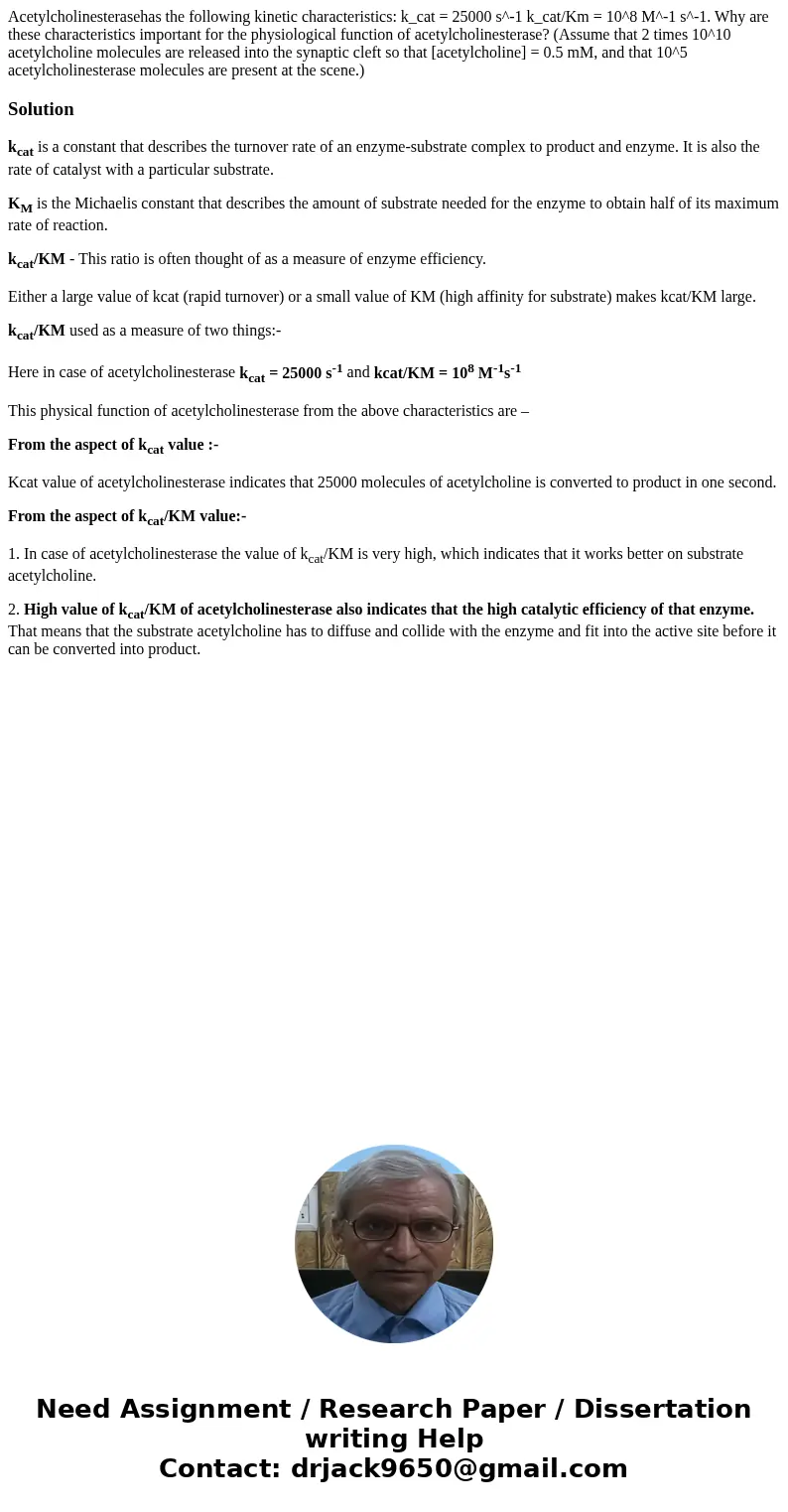Acetylcholinesterasehas the following kinetic characteristic
Solution
kcat is a constant that describes the turnover rate of an enzyme-substrate complex to product and enzyme. It is also the rate of catalyst with a particular substrate.
KM is the Michaelis constant that describes the amount of substrate needed for the enzyme to obtain half of its maximum rate of reaction.
kcat/KM - This ratio is often thought of as a measure of enzyme efficiency.
Either a large value of kcat (rapid turnover) or a small value of KM (high affinity for substrate) makes kcat/KM large.
kcat/KM used as a measure of two things:-
Here in case of acetylcholinesterase kcat = 25000 s-1 and kcat/KM = 108 M-1s-1
This physical function of acetylcholinesterase from the above characteristics are –
From the aspect of kcat value :-
Kcat value of acetylcholinesterase indicates that 25000 molecules of acetylcholine is converted to product in one second.
From the aspect of kcat/KM value:-
1. In case of acetylcholinesterase the value of kcat/KM is very high, which indicates that it works better on substrate acetylcholine.
2. High value of kcat/KM of acetylcholinesterase also indicates that the high catalytic efficiency of that enzyme. That means that the substrate acetylcholine has to diffuse and collide with the enzyme and fit into the active site before it can be converted into product.

 Homework Sourse
Homework Sourse